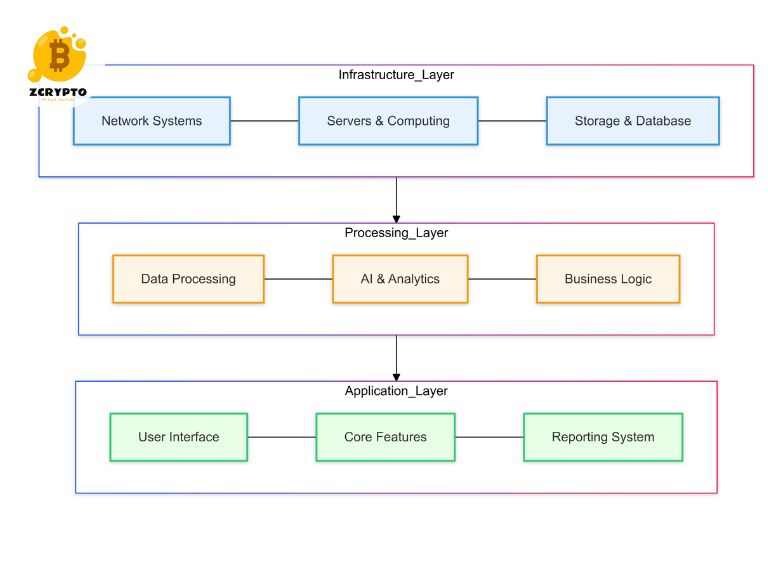Understanding Financial Soundness Indicators (FSIs)
Definition and Role of FSIs
Financial Soundness Indicators (FSIs) are statistical measures designed to assess the soundness and stability of a financial system. These indicators play a critical role in macroprudential surveillance, helping regulators and financial institutions identify potential risks and vulnerabilities before they escalate into full-blown crises.
- Understanding the 10-Year Treasury Note: A Key Benchmark for Investors and the Economy
- What is NFT Finance? Market Mechanisms, Infrastructure, and Economic Impact
- What is Metaverse? Current State and Technical Infrastructure
- Understanding SEC Release IA-1092: A Comprehensive Guide to Investment Adviser Regulations
- How Call Options Work: A Comprehensive Guide to Buying, Selling, and Profiting
Types of FSIs
FSIs can be categorized into two main types: those for the financial sector and those for the nonfinancial sectors. For the financial sector, FSIs monitor aspects such as capital adequacy, asset quality, earnings, and liquidity. These indicators help assess a financial sector’s capacity to absorb losses and vulnerabilities.
You are viewing: How to Monitor and Manage Your Account Balance for Financial Stability
Key Indicators
Some key FSIs include:
-
Return on Equity (ROE): Measures profitability relative to shareholder equity.
-
Return on Assets (ROA): Indicates how efficiently assets are being used to generate earnings.
-
Interest Margin: The difference between interest income and interest expense.
-
Non-interest Income Relative to Gross Income: Shows the proportion of non-interest income in total gross income.
These indicators provide a holistic view of a financial institution’s health and resilience.
Monitoring Financial Vulnerabilities
Macroeconomic Vulnerabilities
Macroeconomic risks can significantly impact financial stability. Key risks include:
-
Inflation: High inflation can erode purchasing power and reduce the value of savings.
-
Excessive Government Borrowing: High levels of government debt can lead to fiscal instability.
-
Cross-border Financing: Dependence on foreign capital can expose economies to external shocks.
Market and Credit Risks
Market risks involve:
-
See more : Mastering the Bear Spread: A Comprehensive Guide to Bearish Options Strategies
Excessive Valuations: Overvalued assets can lead to market bubbles that may burst unexpectedly.
-
Low Risk Premiums: Low risk premiums indicate that investors are not adequately compensated for taking on risk.
Credit risks include:
- Widespread Credit Defaults or Delinquencies: High levels of default or delinquency can destabilize the entire financial system.
Solvency, Leverage, and Funding Risks
Excessive leverage, solvency risks at financial institutions, and risks in short-term funding arrangements are critical areas to monitor. High leverage increases the risk of insolvency, while unstable funding arrangements can lead to liquidity crises.
Contagion Risks
Contagion risks arise from stress transmission across financial institutions and markets or from other countries to the domestic financial system. This can lead to a systemic crisis where problems in one part of the system spread rapidly.
Tools and Frameworks for Monitoring
Federal Reserve’s Monitoring Program
The Federal Reserve has a comprehensive financial stability monitoring program that assesses various vulnerabilities such as:
-
Asset Valuation Pressures
-
Borrowing by Households and Businesses
-
Funding Risk
This program helps identify potential risks early on.
Office of Financial Research (OFR) Monitors
The OFR uses several tools including the Financial System Vulnerabilities Monitor and the Bank Systemic Risk Monitor. These monitors categorize vulnerabilities into different indicators such as market risk, credit risk, leverage, and funding risk.
Integrating FSIs with Stress Testing and Supervision
Stress Testing
Integrating FSIs with stress testing enhances financial surveillance by simulating adverse scenarios to assess the resilience of financial institutions. This helps in identifying potential weaknesses before they become critical issues.
Supervisory Regime
Combining core principle assessments of the supervisory regime with FSIs strengthens macroprudential surveillance. This integrated approach ensures that regulatory oversight is robust and effective in maintaining financial stability.
Practical Steps for Managing Account Balance
Assessing Financial Position
To assess your own financial position, use ratios such as:
-
See more : How to Optimize Your Company’s Capital Structure: A Guide to Debt, Equity, and Financial Flexibility
Debt-to-GDP for Households and Businesses: This ratio helps in understanding the level of indebtedness relative to income.
-
Savings Rate: A higher savings rate indicates better financial health.
Managing Leverage and Liquidity
Managing leverage involves avoiding excessive borrowing and maintaining adequate liquidity. Here are some tips:
-
Keep debt levels manageable.
-
Maintain an emergency fund to cover at least six months of living expenses.
-
Avoid using high-interest loans or credit cards unless absolutely necessary.
Monitoring and Adjusting
Regularly monitor your financial indicators such as income, expenses, savings rate, and debt levels. Adjust your financial strategies based on changes in these indicators. For example:
-
If you notice an increase in expenses without a corresponding increase in income, it may be time to cut back on non-essential spending.
-
If interest rates rise significantly, consider refinancing high-interest loans or adjusting your investment portfolio accordingly.
Additional Resources
For more detailed information:
-
Refer to the Federal Reserve’s Financial Stability Report.
-
Explore the OFR’s working papers on financial stability monitoring.
-
Consult with financial advisors who can provide personalized guidance based on your specific situation.
By following these guidelines and staying informed about the latest developments in financial stability monitoring, you will be better equipped to navigate the complexities of modern finance with confidence.
Source: https://summacumlaude.site
Category: Blog







